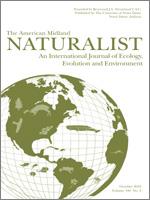Avian nesting behavior has been correlated with environmental variables and many birds appear to be breeding earlier in response to warming spring temperatures. A primary concern associated with changes in nesting phenology is the potential for ecological asynchrony, whereby avian lifecycle events become out of sync with food resources, potentially leading to avian population declines and decreased opportunities for some birds to suppress pests in agroecosystems. Studies assessing changes in nesting phenology have been conducted at multiple scales and, in many cases, regional assessments allow researchers to pinpoint particular climate variables that impact first egg dates. The objective of this study is to assess the impacts of temperature, precipitation, and growing degree-days (GDD) on first egg dates of Eastern Bluebirds (Sialia sialis) and Tree Swallows (Tachycineta bicolor) across a latitudinal gradient in Ohio. In total we assessed 6535 nesting records submitted through the Cornell Lab of Ornithology's NestWatch Project from 2000-2015. Eastern Bluebirds and Tree Swallows generally nested earlier in areas of lower latitude, although bluebirds in southwest Ohio nested later than birds in central Ohio. Eastern Bluebird first egg dates were earlier in warmer spring (P < 0.001) and both Eastern Bluebird and Tree Swallow first egg dates were later in wetter springs (P < 0.001). Spring temperature did not impact the first egg dates of Tree Swallows (P = 0.89). Tree Swallows first egg dates coincided with greater GDD accumulations than first egg dates of Eastern Bluebirds, and both overlapped key control windows for common insect pests in Ohio. Given climate change predictions in this region in the next century, our results suggest temperature-related first-egg-date advancements may be moderated by nesting delays associated with increased precipitation. Our results also demonstrate a mechanism for using GDD to identify overlaps between the nesting dates of birds and important pest emergence windows in Ohio, which could inform efforts to biologically suppress insect pests.
How to translate text using browser tools
1 October 2018
The Impacts of Temperature, Precipitation, and Growing Degree-Days on First Egg Dates of Eastern Bluebird (Sialia sialis) and Tree Swallow (Tachycineta bicolor) in Ohio
Jesse Sockman,
Jason Courter
ACCESS THE FULL ARTICLE
It is not available for individual sale.
This article is only available to subscribers.
It is not available for individual sale.
It is not available for individual sale.





